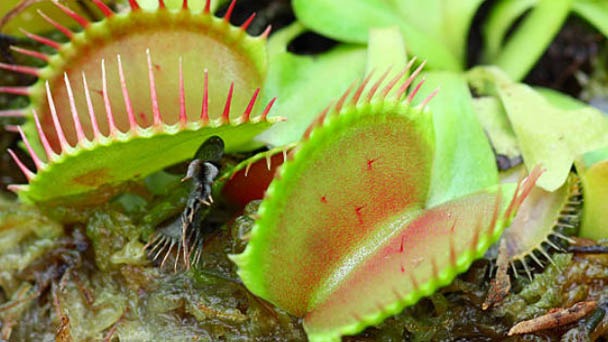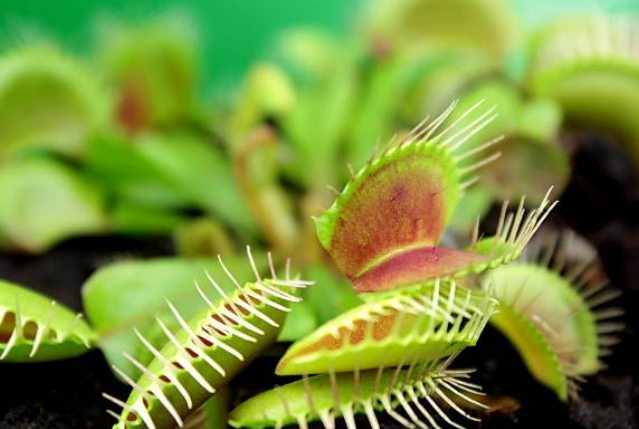Are Venus Fly Traps Animals or Plants - Are They Illegal?
Written by Ivy
Jan 11 2023

Venus flytraps are unusual plants that can consume other living things. Venus flytraps are predators, but they still fall under the plant category. Through photosynthesis, they make their own food, they live continuously growing, and they are rooted to the ground.
Are Venus Flytraps Animals Or Plants
The flowering plant known as the Venus flytrap is best known for its carnivorous eating style. The "trap" is made of two hinged lobes at the end of each leaf. Trichomes, which resemble hair-like projections, are found on the inner surfaces of the lobes, and when prey comes into contact with them, they cause the lobes to close. A nondirectional plant response to being touched, this kind of movement is known as thigmonasty. The trap won't close until the trichomes have been touched several times, preventing the plant from wasting energy if no prey is present. The edges of the hinged traps have tiny bristles that interlock when the trap closes, preventing the prey from squirming free. Despite the fact that there are other carnivorous plants in the wild, the Venus flytrap is one of the very few that actively traps its prey.
Geography
There are only 13 counties in North Carolina and one in South Carolina where the Venus flytrap can be found. The plant has historically been reported from 18 NC counties (Beaufort, Bladen, Brunswick, Carteret, Columbus, Craven, Cumberland, Duplin, Hoke, Jones, Lenoir, Moore, New Hanover, Onslow, Pamlico, Pender, Robeson, and Sampson) and three SC counties (Charleston, Georgetown, and Horry). Lenoir, Moore, and Robeson counties in North Carolina, as well as Georgetown and Charleston counties in South Carolina, now classify it as historical.
Are Venus flytraps prohibited?
Although it has always been unlawful to take them, a change in state laws in 2014 elevated it to a felony. Venus flytraps do not, however, have the same level of protection as threatened and endangered species.
Cellular Structure
Plants and animals differ from a cellular perspective as well. Eukaryotic refers to both plant and animal cells. Organelles inside the cell, however, can differ. For instance, only the cells of plants contain plastics, cell walls, and chloroplasts.
Plants include venus flytraps. Thus, all the components unique to plants are present in their cellular structure.
If you've ever seen a Venus flytrap, you may have noticed that it has a bright green hue. The hue is related to the green pigment chlorophyll, which is essential for photosynthesis.
Growth
The entire life of a plant is spent in continuous growth. Throughout their lives, animals grow. They stop growing after that. Like all other plants, venus flytraps keep growing all the way through their lifespan.
Although the exact number of years that venus flytraps can live has not been determined, it is thought that they can live for up to 20 years.
At maturity, they can grow to a diameter of 5 inches (12.7 cm), a height of 1 foot, and trap lengths of 1 inch. Even so, Venus flytrap plants will change size with the seasons. Their leaves are also constantly changing. While others wilt, others sprout.

Life History
Since venus flytraps are perennials, they produce flowers every year. The petals' bases have green veins that extend toward the petals' edges, and the flowers are white. Flowers that are pollinated eventually produce seeds. (Read More: How to Grow Venus Flytraps from Seed)
Only a limited number of openings and closings are possible before a trap on a plant expires and falls off. From its underground stems, the plant then creates a fresh trap. The Venus flytrap is thought to live up to 20 years, and possibly longer, although its exact lifespan is unknown.
Response to Stimuli
Despite not being as sensitive as animals, plants can react to a variety of stimuli. Animals have a complete nervous system, which is essential for interacting with the outside world. Animals have a number of organs that help them react quickly to stimuli.
But how do Venus flytraps catch their prey so successfully if plants are not as sensitive?
So let's start at the beginning. Only when they detect movement inside of them do the Venus flytrap leaves begin to move. Each trap consists of two leaves, each of which has three hair cells arranged in a triangle.
When something touches the trap's hair cells two times in quick succession, the trap will only shut. In order to prevent closing due to rain, dirt, or any other inanimate object touching the trap, venus flytraps develop the need for two stimuli.
Overall, the plant as a whole has not evolved a system to respond to stimuli. The leaves of the Venus flytrap, on the other hand, have developed into jaw-like structures with sensitive hair cells.
Venus Flytraps Feeding Process
The process of photosynthesis allows plants to produce their own food. Plants use sunlight during this process to create food out of carbon and water. Conversely, plants are the only source of nutrition for animals. Herbivores are animals that eat only plants. Others eat other animals or living things that exist because of plants.
Venus flytraps use their traps to capture bugs and use enzymes to break them down, but they also eat insects to supplement their diet. Venus flytraps typically use photosynthesis to increase their size.
Venus flytraps use energy from the sun and nutrients from the air and soil to create their own food. However, Venus flytraps thrive in poor soil that lacks nutrients. These plants have evolved to be able to eat small prey in order to supplement their diet because the ground doesn't contain enough nutrients. (Read More: Venus Fly Trap Light Requirements - Does It Need Direct Sunlight?)
From a scientific standpoint, the feeding behavior of the Venus flytrap is fascinating. You'll also be curious and even enjoy feeding your plant if you try to grow venus flytraps at home!
Conclusion
Plants, not animals, are what the Venus flytrap is. Today, we looked at a number of aspects, including cellular makeup, reproductive biology, and response to environmental cues, that qualify Venus flytraps as plants. There are, however, a lot more qualities connected to this scientific choice. You could investigate their genetics or food storage methods, for instance.
Related Questions
What is a Venus Flytrap Classified As?
Venus flytraps are classified as a plant. They belong to the family of carnivorous plants called Droseraceae. Venus flytraps are also known as Dionaea muscipula in scientific jargon.
Why is a Venus Flytrap Not An Animal?
Venus flytraps are carnivorous plants, not animals, because they display traits and behaviors that are more typical of the plant kingdom. Via photosynthesis, Venus flytraps produce all of their own food.
Are Venus Flytraps Alive?
Living Venus flytraps exist. They are North Carolina and South Carolina native carnivorous plants. Venus flytraps are currently an endangered species as a result of illegal poaching, an increase in farming and urbanization, and a number of other factors.
Only the Carolinas in the United States are a natural habitat for venus flytraps. However, because of their distinctive and fascinating nature, people all over the world grow them by imitating their natural habitat. Therefore, don't be surprised if you discover a live Venus flytrap sale somewhere outside of the Carolinas.
Is Venus Flytrap Dangerous
A venus flytrap can't harm a person; they are weak. In fact, putting your finger in a venus flytrap will cause more harm to the plant than to you because it will needlessly use energy.
Read More About Venus Flytraps
- Will Venus Fly Trap Bloom Flowers - Is It a Perennial Plant
- How Long Can Venus Flytraps Live - Venus Flytrap Life Cycle
- How Does the Venus Flytrap Work?
- How to Repot a Venus Flytrap
- How Much Does Venus Flytrap Cost
- How Does A Venus Flytrap Kills & Eat Insect - RayaGarden
- How Big Do Venus Flytrap Get - Growth Rate & Speed
Latest Updated
- Benefits of Bugleweed - 7 Science-backed Health Benefits
- Bugleweed Dangers & Side Effects - Is It Poisonous?
- How to Plant Evergreen Trees - What You Should Know
- When to Plant Evergreens - Grow Guide for Evergreen Trees
- 12 Wonderful Evergreen Shrubs for Your Garden
- 12 Popular Evergreen Plants with Pictures for Beginners
- When And How To Prune A Lilac Bush Like a Pro
- How to Grow & Care for Lilac Vine (Hardenbergia Violacea)
- Japanese Lilac Tree (Syringa Reticulata) Care & Propagation Guide
- Shumard Oak Pros and Cons - What to Know
Popular Articles
- Winter maintenance of Antirrhinum Majus
- How to Grow Terminalia Mantaly Tree
- How to Grow and Care for Crossostephium Chinense
- How to grow Antirrhinum Majus in spring
- Peristeria Elata (Dove Orchid) Profile: Info & Care Guide
- Underwatered Snake Plant (Sansevieria Trifasciata) - Signs And How To Fix
- How to Care for Brazilian Jasmine Plant (Mandevilla Sanderi)
- How to Grow & Care for Graptopetalum Purple Delight in Summer
- Rosa Chinensis (China Rose): Plant Growing & Care Tips
- How to Care for Baby Sun Rose (Aptenia Cordifolia)